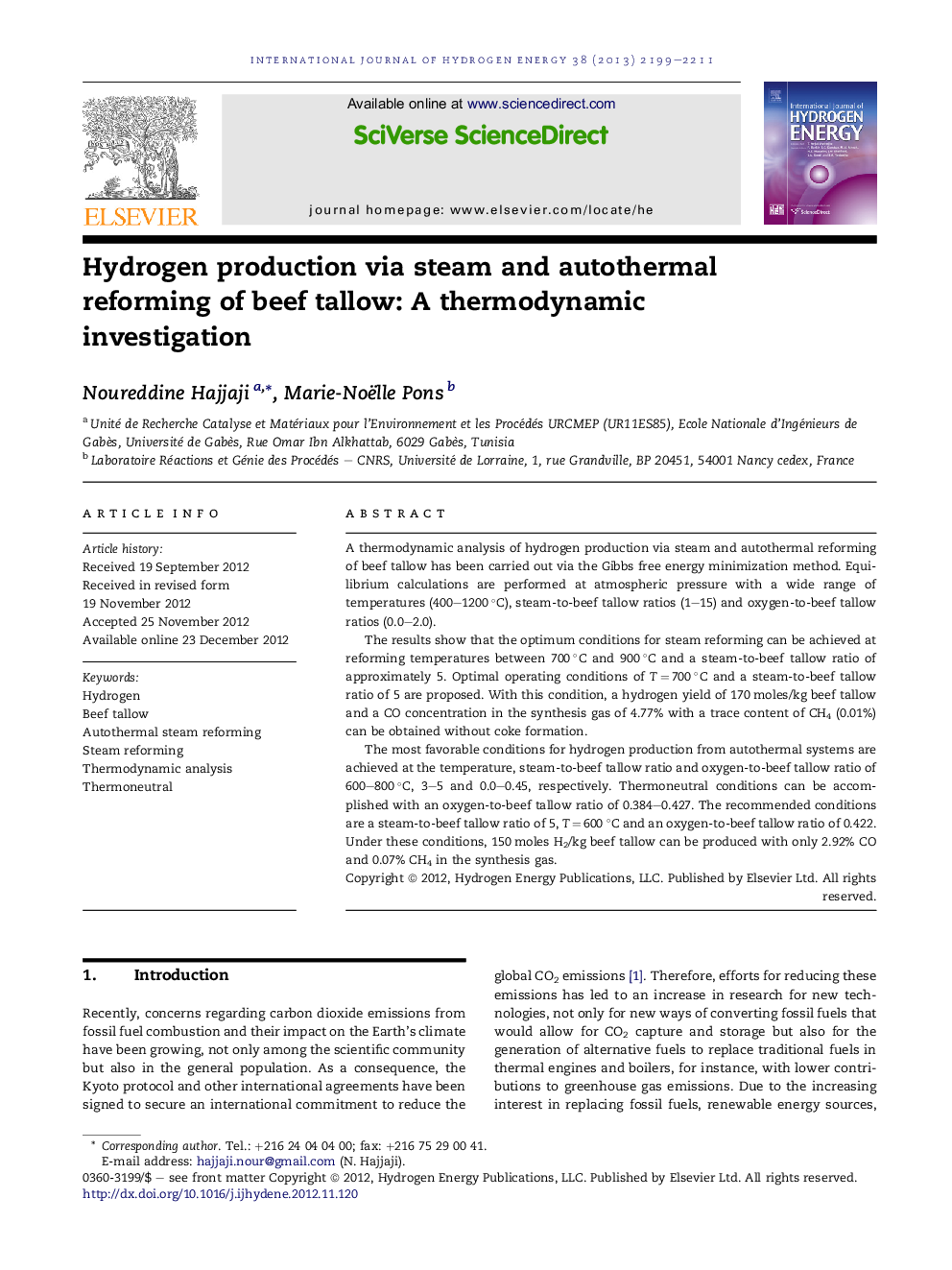| Article ID | Journal | Published Year | Pages | File Type |
|---|---|---|---|---|
| 1274083 | International Journal of Hydrogen Energy | 2013 | 13 Pages |
A thermodynamic analysis of hydrogen production via steam and autothermal reforming of beef tallow has been carried out via the Gibbs free energy minimization method. Equilibrium calculations are performed at atmospheric pressure with a wide range of temperatures (400–1200 °C), steam-to-beef tallow ratios (1–15) and oxygen-to-beef tallow ratios (0.0–2.0).The results show that the optimum conditions for steam reforming can be achieved at reforming temperatures between 700 °C and 900 °C and a steam-to-beef tallow ratio of approximately 5. Optimal operating conditions of T = 700 °C and a steam-to-beef tallow ratio of 5 are proposed. With this condition, a hydrogen yield of 170 moles/kg beef tallow and a CO concentration in the synthesis gas of 4.77% with a trace content of CH4 (0.01%) can be obtained without coke formation.The most favorable conditions for hydrogen production from autothermal systems are achieved at the temperature, steam-to-beef tallow ratio and oxygen-to-beef tallow ratio of 600–800 °C, 3–5 and 0.0–0.45, respectively. Thermoneutral conditions can be accomplished with an oxygen-to-beef tallow ratio of 0.384–0.427. The recommended conditions are a steam-to-beef tallow ratio of 5, T = 600 °C and an oxygen-to-beef tallow ratio of 0.422. Under these conditions, 150 moles H2/kg beef tallow can be produced with only 2.92% CO and 0.07% CH4 in the synthesis gas.
► Thermodynamic analysis of steam and autothermal reforming of beef tallow. ► Beef tallow is considered as a mixture of triglycerides. ► Coke formation is avoided by increasing the temperature and/or the S/C ratio. ► Optimum steam reforming conditions are 700–900 °C and S/C ratio around 5. ► Optimum autothermal conditions are 600–800 °C, S/C of 3–5 and O/C of 0–0.45.
